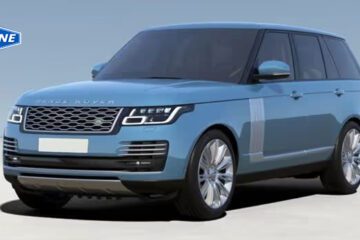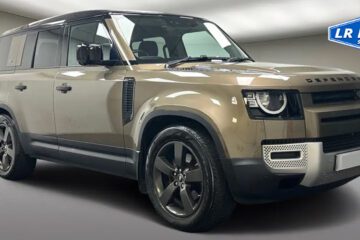Introduction:
In luxury SUVS, Range Rover remains a benchmark for luxury, performance, and capability. Even if navigating busy city streets or traversing rugged terrains, few vehicles offer the fusion of prestige and power quite like a Range Rover. The Range Rover 3.0 and 4.4 V8 deliver different driving experiences, but the 4.4 V8 offers a more luxurious and powerful ride.
Understanding the Evolution of Range Rover Engines
Land Rover has always given value to both refinement and capability. For years, its engines have shown a balance of torque-rich diesel options and effortless petrol-powered alternatives. The introduction of the 3.0-litre Ingenium engine is a clear turning point for Range Rover, highlighting performance and efficiency in an advanced powerplant.
On the other hand, the transition to a BMW-sourced 4.4-litre twin-turbocharged V8 signals a new period of power and luxury. This partnership offers not only raw muscle but the durability and prestige associated with BMW’s M division.
Both engines are at the heart of today’s Range Rover 3.0 vs 4.4 V8 comparison, each variant offers specific performance on and off the road.
The 3.0l Ingenium Engine: Refinement Meets Efficiency
The 3.0-litre engine found in several Range Rover Vogue and Range Rover Sport models belongs to the Ingenium family, developed in-house by Jaguar Land Rover. Available in both petrol and diesel forms, it’s designed to deliver incredible torque, responsive acceleration, and lower emissions.
In petrol form, the 3.0-litre unit is often turbocharged or supercharged and coupled with mild hybrid (MHEV) technology. The diesel version supports a twin-turbo setup with strong low-end pull and long-distance cruising ability.
The major benefit of the 3.0-litre engine depends on its fuel economy and balanced performance. The diesel variant is particularly appealing for urban drivers or those who win motorway miles due to its exceptional mileage and reduced running costs. The petrol variant is quieter and more agile, offering effortless revs and less turbo lag.
Drivers will note how the 3.0 diesel delivers enough torque at low RPMS, exemplary for towing or off-road exploration. In comparison, the petrol 3.0-litre version delivers an exemplary experience, with better acceleration and reduced noise.
While discussing Range Rover 3.0 vs 4.4 V8 comparison, it’s essential to highlight the balance of efficiency and luxury in the 3.0-litre engines. While they may not align with the brute power of a V8, they shine in actual usability and refinement.
The 4.4l V8 BMW-Sourced Engine: Powerhouse Performance
Successor to the legendary 5.0-litre supercharged engine, the 4.4-litre twin-turbo V8 merges brute force with advanced engineering. Shared with the BMW X5 M and X7 M50i, this engine blends brute force with effortless refinement.
Available only in petrol, this 4.4-litre V8 has a powerful effect. With 523 hp and 553 lb-ft of torque (in most standard forms), the Range Rover becomes a real high-performance SUV, providing blistering acceleration for such a large vehicle. It hits 0-60 mph in just over 4.4 seconds, all while maintaining impressive composure.
But the 4.4l V8 is more than speed. It also introduces an ultra-smooth throttle response, improved by BMW’s signature engine mapping and accurate twin-scroll turbocharging. This means power delivery is linear and instant, giving the Range Rover a dynamic character, even if cruising on the highway or overtaking on country roads.
In the Range Rover 3.0 vs 4.4 V8 comparison, the V8 is an outstanding performance king. It changes the driving experience into something thrilling and confident, with smooth acceleration and commanding presence.
Performance Comparison: On-Road Dynamics and Acceleration
From behind the wheel, the difference between the 3.0 and 4.4 V8 is instantly notable. The 3.0l feels lighter, more nimble, and perfectly suited to daily commuting. It glides over surfaces with poise, and the mild-hybrid support smooths stop-start transitions while boosting overall fuel efficiency.
By comparison, the 4.4 V8 delivers muscle car dynamics hidden in an SUV shell. Despite the heavier engine, the Range Rover stays composed due to active suspension and precision chassis tuning from BMW’s M division, providing a stable, corner-hugging ride. Drivers opting for the 3.0-litre petrol variant will enjoy an ideal cruiser, one that’s efficient and composed. Diesel 3.0l variants lean more toward utility and long-distance driving, especially in rural environments or towing scenarios.
Still, the 4.4 V8 remains matchless in terms of acceleration and sound. The unique exhaust note shows the engine’s performance credentials. It’s a refined powertrain housed in a luxury SUV, excellent for those who value both strength and sophistication.
Fuel Economy and Real-World Efficiency
Opulence often comes at a cost, and fuel economy is a main area in our Range Rover 3.0 vs 4.4 V8 comparison. The 3.0-litre diesel engines smoothly take the lead here, offering nearly 35-40 mpg on motorways and long-distance drives. The petrol variant follows with slightly lessen numbers, approximately 25-30 mpg depending on driving style.
The 4.4-litre V8 petrol, though potent, guzzles more fuel. Average figures hover round about 18-22 mpg, dropping further in city driving or under aggressive acceleration. For many buyers, particularly in regions with high fuel prices, this could be a vital consideration.
For those prioritising performance over economy, the 4.4l’s effortlessnes and torque make up for its thirst. It’s not designed to be frugal, it’s built to excite.
Off-Roading and Utility: Diesel vs Petrol Power
The Range Rover remains an experienced off-roader, regardless of trim or engine. The 3.0-litre diesel, with its low-end torque and fuel range, is perfect for adventures into the wilderness. It climbs, fords, and traverses like a true 4×4, silent but capable.
The 3.0-litre petrol is equally capable but has less torque delivery found in diesel models, making it slightly less perfect for towing or hill climbs under load. However, it shines in urban or light off-road conditions, delivering effortless transitions between paved and rugged surfaces.
The 4.4l V8, while commendably powerful, isn’t the first option for off-roading purists. Its larger size, increased weight, and performance tuning mean it’s appropriate for road dominance than mud crawling. Yet, when called upon, it will hold its own with Land Rover’s signature Terrain Response system and intelligent AWD.
Luxury Feel and Cabin Vibration
Another area where engine choice influences your Range Rover experience is cabin refinement. The 3.0 diesel is a little bit noisier on cold starts and under load, with more vibration transferred to the cabin. Petrol versions smooth this out considerably, providing a near-silent interior experience.
The 4.4-litre V8, however, boosts refinement even further. Despite its incredible power, it remains whisper-quiet when cruising, with only a subtle growl under acceleration. Inside the cabin, it’s all about comfort and sophistication, a sensory haven on wheels.
If cabin refinement and smooth power delivery are important to you, the 4.4 V8 wins in the Range Rover 3.0 vs 4.4 V8 comparison. It changes every journey into a serene escape.
Reliability and Maintenance Expectations
The 3.0-litre Ingenium engines, particularly in diesel form, have matured notably over the years. Early reliability concerns have mostly been tackled through software updates and enhanced components. These engines are now regarded as powerful and service-friendly, perfect for long-term ownership.
The 4.4-litre V8, sourced from BMW, comes with an established ancestry. Having served reliably in various BMW models, this engine is built for longevity and spirited driving. That said, its complex twin-turbo setup and high-performance components can result in higher maintenance costs down the line.
For owners looking for peace of mind and lower total ownership costs, the 3.0-litre diesel remains a dependable workhorse. But for those who prioritise prestige and proven engineering pedigree, the BMW V8 is a worthy upgrade.
Verdict:
Both engines serve specific buyer profiles. The 3.0-litre petrol and diesel engines represent excellent, economical luxury, ideal for day-to-day elegance. The diesel, in particular, remains desirable among rural and fleet buyers, while the petrol variant suits urban professionals looking for prestige without the V8’s thirst.
Meanwhile, the 4.4-litre BMW-sourced V8 redefines the luxury SUV experience. It is unapologetically potent, gloriously smooth, and profoundly commanding. If you want the full force of advanced engineering wrapped in hand-stitched leather and the latest tech, the V8 is your answer.
Conclusion:
At the core of every luxury SUV is the engine, and knowing the pros and cons of each helps you make a knowledgeable decision. Even if you’re leaning towards the efficient 3.0 diesel or the thrilling 4.4l V8 petrol, both engines represent the apex of Range Rover engineering.
For repairs, upgrades, or diagnostics on your Range Rover powertrain, trust the team at LR Engine Specialists. With expert knowledge, professional technicians, and industry-leading service, we guarantee your luxury SUV runs at its peak today and for years to come.
FAQs:
Which engine is better for daily commuting – the 3.0l or 4.4l V8?
The 3.0l (especially diesel) offers ideal fuel economy and comfort for daily use. It’s smoother in stop-start traffic and affordable.
Does the 4.4-litre BMW-sourced V8 require more maintenance?
Yes, due to its complex twin-turbo setup and performance components, it may experience higher maintenance costs over time.
Is the 3.0-litre engine powerful enough for off-roading and towing?
Especially the diesel version, which delivers strong low-end torque, exemplary for towing and off-road terrain.
How different is the fuel economy between the two engines?
The 3.0l diesel can reach up to 35–40 mpg, while the 4.4l V8 can reach approximately 18–22 mpg, depending on driving conditions.
Which engine provides a more luxurious and quieter ride?4.4-litre 4.4l V8 offers superior cabin refinement and smoothness, with powerful but quiet performance even at high speeds.


